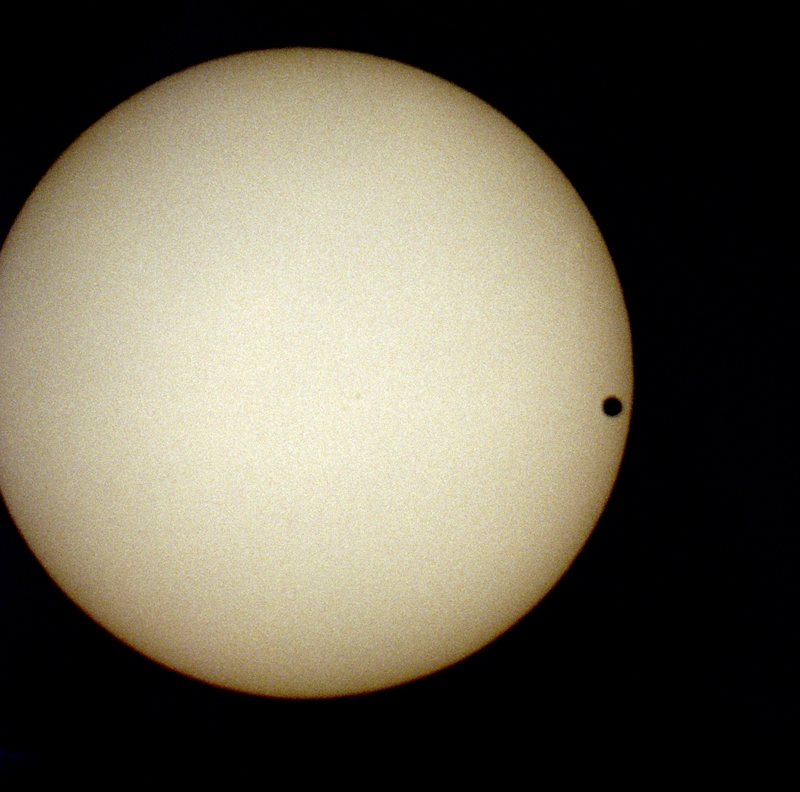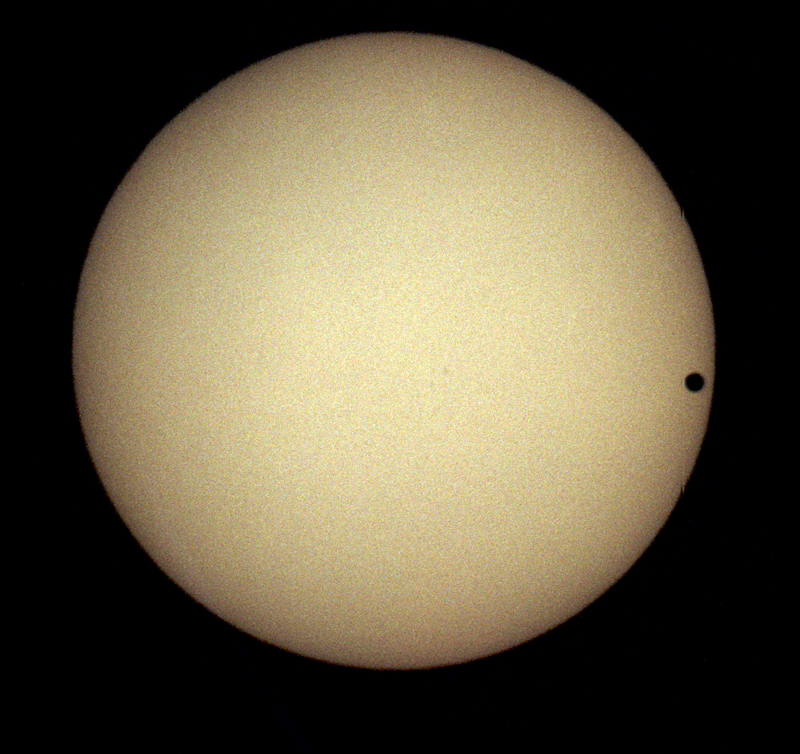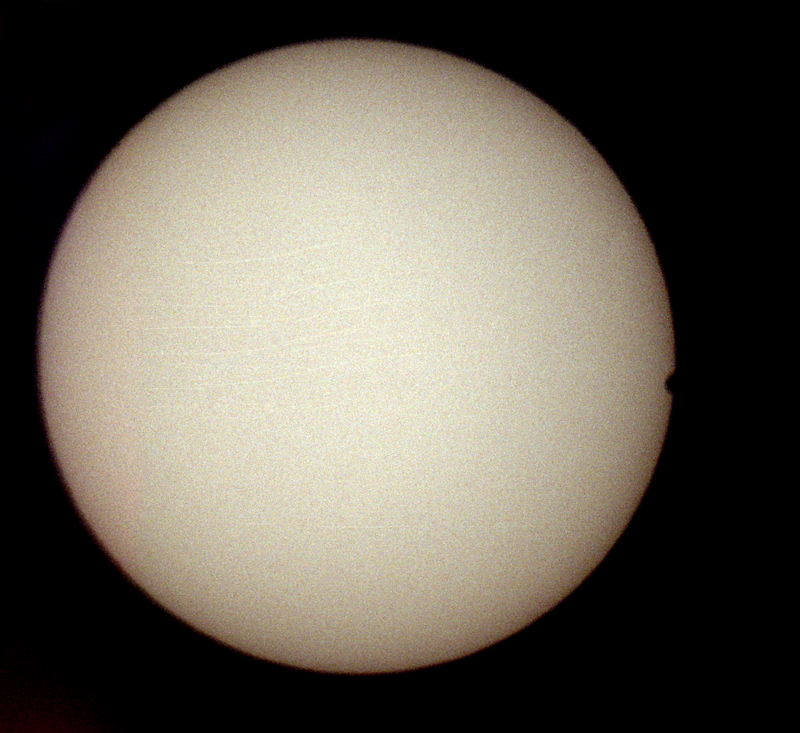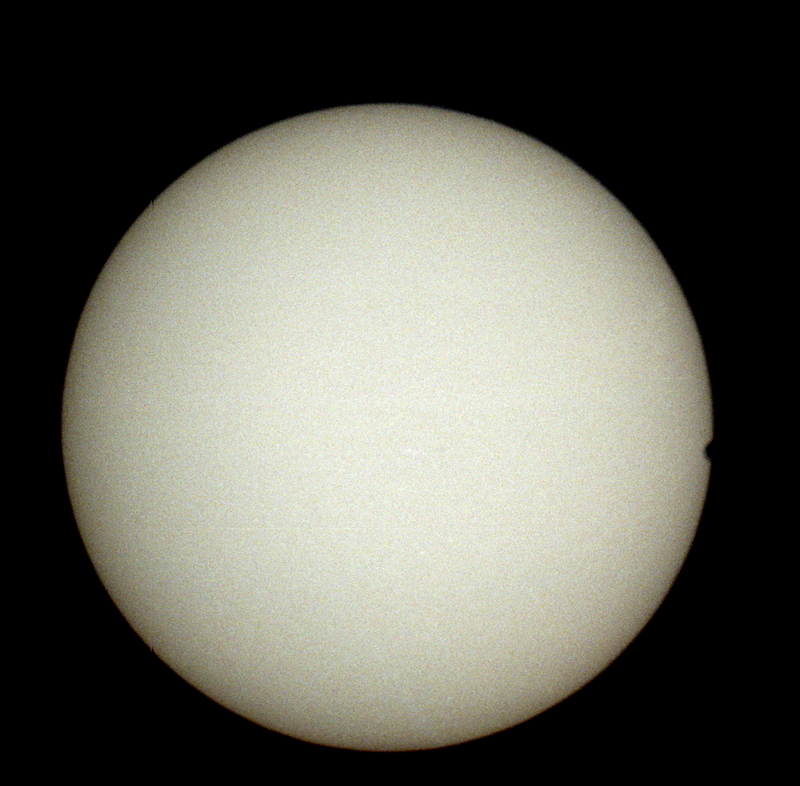
1/60 second exposure, Fuji Superia 200 film.
8" f/6.3 schmidt-cassegrain at prime focus.
The transit of Venus on June 8, 2004, was something that I had discussed in lectures and looked forward to for over 25 years. In fact, I first read about it back in 1966! So to be able to finally observe it, was something of an event. My biggest concern was the Pennsylvania weather. It is definitely not sympathetic to astronomers!! However the day dawned fine and clear and I had an excellent view of the transit.
I had considered setting up at the campus observatory, however trees were going to block out the Sun until almost the end of the transit, so I decided to set up in a field nearby which was on the top of a hill. This meant that I would not have any power to drive the telescope I was going to use for photography, but that proved not to be any problem.
The Sun rose across a valley filled with fog and there were a few small clouds on the eastern horizon. As a result I did not get a view of the transit until about 10 minutes after sunrise. Due to the fog, the Sun could easily be viewed directly with the naked eye. It was a beautiful deep red, but what struck me most forcibly was the size of Venus. I have observed numerous transits of Mercury and am used to watching a tiny disk moving across the face of the Sun, but Venus was HUGE! It was very easy to see with the naked eye as a large black spot not far from the edge of the Sun.
I enjoyed some time alternating between photographing the transit and view it with the telescope and with the naked eye. Several passers-by stopped to have a look and were impressed with the view through the telescope.


Nearing the time of third contact, the Sun had risen sufficiently to be visible from the observatory, so I moved back to there. Along the way, I stopped by the house to pick up my wife so she could have a look. As a result fo this, I missed third contact. I also missed 4th contact as I let me wife watch it.


All in all, it was a fun time and great to see such a rare event. My only disappointment was that due to the trees blocking the Sun from the observatory for so long, I was unable to watch the transit with the Clark 10" refractor and an h-alpha filter. :-(